Themed collection Luminescence and photophysical properties of metal complexes

Luminescent lanthanide coordination polymers for photonic applications
Luminescent lanthanide coordination polymers composed of lanthanide ions and organic joint ligands exhibit characteristic photophysical and thermostable properties that are different from typical organic dyes, luminescent metal complexes, and semiconductor nanoparticles.
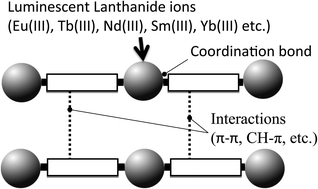
RSC Adv., 2015,5, 338-353
https://doi.org/10.1039/C4RA09255D
An overview of the recent developments on Hg2+ recognition
Adverse influences of mercury on living organisms are well known. Despite efforts from various regulatory agencies, the build-up of Hg2+ concentration in the environment is of serious concern. This necessitates the search for new and efficient reagents for recognition and detection of Hg2+ in environmental samples.
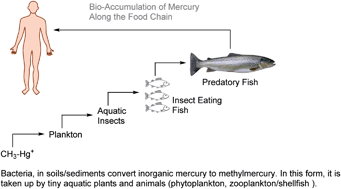
RSC Adv., 2014,4, 36140-36174
https://doi.org/10.1039/C4RA03594A
The importance of various anchoring groups attached on porphyrins as potential dyes for DSSC applications
The influence of different anchoring groups in the efficiency of porphyrin dye sensitized solar cells.
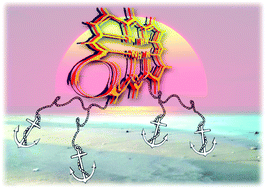
RSC Adv., 2014,4, 21379-21404
https://doi.org/10.1039/C4RA00985A
A review on advances in photocatalysts towards CO2 conversion
The present situation reveals the dependence on fossil fuels, which is seriously accountable for two major impediments: (i) global warming due to increasing atmospheric carbon dioxide (CO2) and (ii) the alarming consumption of energy assets. Therefore, the photocatalytic CO2 conversion technology needs to select efficient photocatalysts towards solar fuel harvesting.
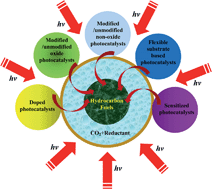
RSC Adv., 2014,4, 20856-20893
https://doi.org/10.1039/C4RA01769B
Zn(II)-coordination modulated ligand photophysical processes – the development of fluorescent indicators for imaging biological Zn(II) ions
Knowledge of Zn(II) coordination-modulated ligand photophysics is the foundation for developing fluorescent indicators that help address challenges in Zn(II) biology.

RSC Adv., 2014,4, 20398-20440
https://doi.org/10.1039/C4RA00354C
Utilization of the photophysical and photochemical properties of phosphorescent transition metal complexes in the development of photofunctional cellular sensors, imaging reagents, and cytotoxic agents
In this review article, we describe very recent applications of phosphorescent transition metal complexes in intracellular biosensing, bioimaging, and phototherapeutics.
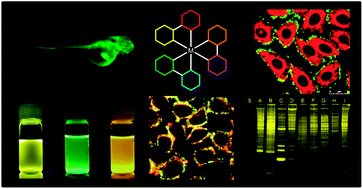
RSC Adv., 2014,4, 10560-10585
https://doi.org/10.1039/C3RA47611A
Time-resolved confocal microscopy using lanthanide centred near-IR emission
Time-resolved NIR imaging of lanthanide coated silica particles using Photon Arrival Time Imaging allows fast acquisition of high contrast images based on the probe luminescence lifetime.

RSC Adv., 2015,5, 70282-70286
https://doi.org/10.1039/C5RA15759E
Tunable near white light photoluminescence of lanthanide ion (Dy3+, Eu3+ and Tb3+) doped DNA lattices
We constructed lanthanide ion doped double-crossover DNA lattices grown on a silica substrate and studied their photoluminescence characteristics.
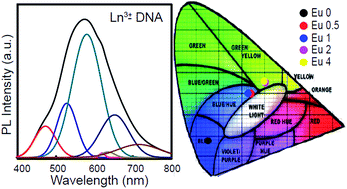
RSC Adv., 2015,5, 55839-55846
https://doi.org/10.1039/C5RA07360J
Highly thermostable lanthanide metal–organic frameworks exhibiting unique selectivity for nitro explosives
The solvent-free Eu-MOF with high red emission intensity and the microporous instinct exhibits high sensitivity for 2,4,6-trinitrophenol with Ksv constant 6.24 × 104 M−1.
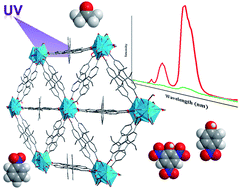
RSC Adv., 2015,5, 93-98
https://doi.org/10.1039/C4RA13773F
Self-assembly of supramolecular triangles with neutral trans-PdCl2 directing units
Pd(II)-directed self-assembly of homoleptic metal–polypyridyl complexes functionalized with 3-pyridyl groups gives rise to supramolecular metallo-triangles as confirmed by a combination of analytical techniques.
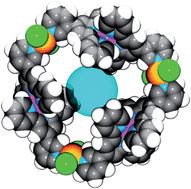
RSC Adv., 2014,4, 21262-21266
https://doi.org/10.1039/C4RA01596G
Negishi reaction in BODIPY dyes. Unprecedented alkylation by palladium-catalyzed C–C coupling in boron dipyrromethene derivatives
Unprecedented Negishi reaction in haloBODIPYs to yield alkyl, aryl and alkynyl BODIPY dyes, including interesting a symmetrically disubstituted derivatives, is described.

RSC Adv., 2014,4, 19210-19213
https://doi.org/10.1039/C4RA00651H
Layer-by-layer deposition and photovoltaic property of Ru-based metal–organic frameworks
In the present work, thin films of ruthenium based metal–organic frameworks are synthesized using a layer-by-layer (LbL) technique and the film is characterized using XRD, FE-SEM, UV/visible spectroscopy, cyclic voltammetry and photoluminance spectroscopy.
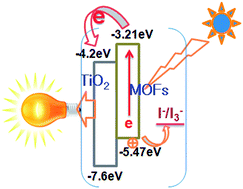
RSC Adv., 2014,4, 12037-12042
https://doi.org/10.1039/C4RA00397G
Photoreduction of CO2 to methanol with hexanuclear molybdenum [Mo6Br14]2− cluster units under visible light irradiation
Hexanuclear molybdenum [Mo6Br14]2− cluster units induced photocatalytic reduction of CO2 to methanol under visible light irradiation.
![Graphical abstract: Photoreduction of CO2 to methanol with hexanuclear molybdenum [Mo6Br14]2− cluster units under visible light irradiation](/en/Image/Get?imageInfo.ImageType=GA&imageInfo.ImageIdentifier.ManuscriptID=C3RA47255H&imageInfo.ImageIdentifier.Year=2014)
RSC Adv., 2014,4, 10420-10423
https://doi.org/10.1039/C3RA47255H
Construction of a naphthalimide-containing hexagonal metallocycle via coordination-driven self-assembly and its fluorescence detection of protons
A novel naphthalimide-containing hexagonal metallocycle with the function of fluorescence detection of proton has been constructed via coordination-driven self-assembly.

RSC Adv., 2014,4, 2605-2608
https://doi.org/10.1039/C3RA46500D
Highly efficient near IR photosensitizers based-on Ir–C bonded porphyrin-aza-BODIPY conjugates
Novel orthogonally arranged Ir(III) porphyrin-aza-BODIPY conjugates exhibit strong absorbance in the near infrared region and have unusually high singlet oxygen quantum yields, since they act as unique molecules rather than as dyads.
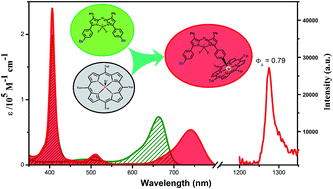
RSC Adv., 2016,6, 72115-72120
https://doi.org/10.1039/C6RA10131C
Green organic light-emitting devices with external quantum efficiency up to nearly 30% based on an iridium complex with a tetraphenylimidodiphosphinate ligand
High performance green electroluminescent device with maximum brightness, current efficiency, power efficiency and external quantum efficiency (EQE) up to 113 610 cd m−2, 112.30 cd A−1, 97.95 lm W−1 and 29.4%, was realized.
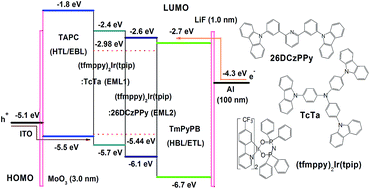
RSC Adv., 2016,6, 63200-63205
https://doi.org/10.1039/C6RA14231A
Novel bis- and tris-cyclometalated iridium(III) complexes bearing a benzoyl group on each fluorinated 2-phenylpyridinate ligand aimed at development of blue phosphorescent materials for OLED
Novel blue phosphorescent bis- and tris-cyclometalated iridium(III) complexes with excellent PL quantum yields were developed, using fluorinated 2-(5-benzoylphenyl)pyridinate ligands.

RSC Adv., 2016,6, 51435-51445
https://doi.org/10.1039/C6RA09385J
A high efficiency ruthenium(II) tris-heteroleptic dye containing 4,7-dicarbazole-1,10-phenanthroline for nanocrystalline solar cells
cis-[Ru(cbz2-phen)(dcbH2)(NCS)2] sensitized cells exhibited higher performance than those by N3. The efficiency is discussed in terms of its thermodynamic and structure.

RSC Adv., 2016,6, 46487-46494
https://doi.org/10.1039/C6RA08666G
Broadband spectra with fluorescence and phosphorescence dual emission from bichromophoric platinum metallomesogens containing a 6,12-dihydro-indeno[1,2-b]fluorene linkage
Two bichromophoric platinum metallomesogens, FJ-1 and FJ-2, exhibited fluorescence (1π,π*) and phosphorescence (3π,π*) dual emissions in solution. Their photophysical properties were detailedly investigated by experiment and theory calculation.
![Graphical abstract: Broadband spectra with fluorescence and phosphorescence dual emission from bichromophoric platinum metallomesogens containing a 6,12-dihydro-indeno[1,2-b]fluorene linkage](/en/Image/Get?imageInfo.ImageType=GA&imageInfo.ImageIdentifier.ManuscriptID=C6RA03391A&imageInfo.ImageIdentifier.Year=2016)
RSC Adv., 2016,6, 45864-45872
https://doi.org/10.1039/C6RA03391A
Synthesis, photophysics, and reverse saturable absorption of 7-(benzothiazol-2-yl)-9,9-di(2-ethylhexyl)-9H-fluoren-2-yl tethered [Ir(bpy)(ppy)2]PF6 and Ir(ppy)3 complexes (bpy = 2,2′-bipyridine, ppy = 2-phenylpyridine)
Both the charges and benzothiazolylfluorenyl pendant on the 2-phenylpyridine ligand influence the photophysics and reverse saturable absorption of Ir(III) complexes.
![Graphical abstract: Synthesis, photophysics, and reverse saturable absorption of 7-(benzothiazol-2-yl)-9,9-di(2-ethylhexyl)-9H-fluoren-2-yl tethered [Ir(bpy)(ppy)2]PF6 and Ir(ppy)3 complexes (bpy = 2,2′-bipyridine, ppy = 2-phenylpyridine)](/en/Image/Get?imageInfo.ImageType=GA&imageInfo.ImageIdentifier.ManuscriptID=C5RA20084A&imageInfo.ImageIdentifier.Year=2016)
RSC Adv., 2016,6, 41214-41228
https://doi.org/10.1039/C5RA20084A
Can chiral P(III) coordinate Eu(III)? Unexpected solvent dependent circularly polarised luminescence of BINAP and Eu(III)(hfa)3 in chloroform and acetone
The coordination of Eu(III) (from Eu(III)(hfa)3) by chiral P(III) (from BINAP) led to circularly polarised luminescence in dilute solutions on the order of |gem| ≈ 10−2 at 5D0 → F1 and |gem| ≈ 10−2 at 5D0 → F2 transitions, i.e., in chloroform and acetone.
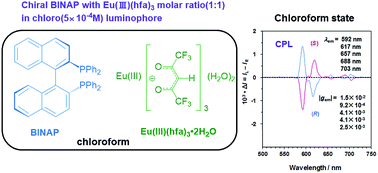
RSC Adv., 2016,6, 40219-40224
https://doi.org/10.1039/C6RA05856F
High-brightness solution-processed phosphorescent OLEDs with pyrimidine-based iridium(III) complexes
New complexes Ir(ppm)2(pic) and Ir(ppm)2(taz) emitted 555 and 532 nm light, respectively. Solution-processed organic light-emitting diodes based on Ir(ppm)2(taz) showed high-brightness of 125072 cd m−2, peak current efficiencies of 40.4 cd A−1.
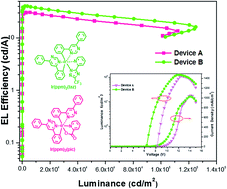
RSC Adv., 2016,6, 34970-34976
https://doi.org/10.1039/C5RA28134B
Construction and luminescence property of a highly ordered 2D self-assembled amphiphilic bidentate organoplatinum(II) complex
A red luminescent film was constructed by self-assembly of 1-Pt from methanol. The film on a substrate, exhibiting multi-stimuli responsiveness, was further obtained.

RSC Adv., 2016,6, 27360-27369
https://doi.org/10.1039/C6RA03553A
Highly selective ratiometric fluorescent recognition of histidine by tetraphenylethene–terpyridine–Zn(II) complexes
Fluorescent detection of histidine is achieved with distinctive color change from yellow to blue by using the Zn(II) complexes of the terpyridine–tetraphenylethene conjugates.

RSC Adv., 2016,6, 25319-25329
https://doi.org/10.1039/C6RA03724K
An electron-transfer photochromic metal–organic framework (MOF) compound with a long-lived charge-separated state and high-contrast photoswitchable luminescence
A new photochromic MOF compound exhibits a charge-separated state with lifetime exceeding the reported values of the analogues and a luminescence contrast higher than those of most known pyridine derivative-based photochromic compounds.
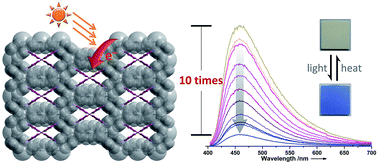
RSC Adv., 2016,6, 24190-24194
https://doi.org/10.1039/C5RA25707G
Cost-effective solar concentrators based on red fluorescent Zn(II)–salicylaldiminato complex
A red light and concentrated zinc complex embedded in PMMA yields a cost-effective and efficient luminescent solar concentrator.
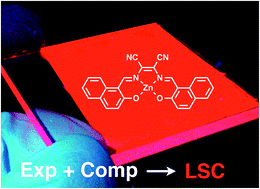
RSC Adv., 2016,6, 17474-17482
https://doi.org/10.1039/C5RA23049G
Theoretical study and design of highly efficient platinum(II) complexes bearing tetradentate ligands for OLED
Theoretical study for improving the efficiency of a novel tetradentate platinum(II) complexes in OLED by molecular modification.
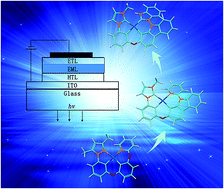
RSC Adv., 2016,6, 11648-11656
https://doi.org/10.1039/C5RA22754B
A ratiometric, fluorescent BODIPY-based probe for transition and heavy metal ions
A BODIPY-based fluorescent sensor for heavy and transition metal ions has been synthesized and spectroscopically characterized.
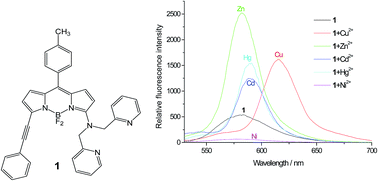
RSC Adv., 2016,6, 7806-7816
https://doi.org/10.1039/C5RA23751C
Combining phosphonic acid-functionalized anchoring ligands with asymmetric ancillary ligands in bis(diimine)copper(I) dyes for dye-sensitized solar cells
A 6,6′-dimethyl substitution pattern in Lanchor in [Cu(Lanchor)(Lancillary)]+ dyes in DSCs is superior to two phenyl groups, even when steric crowding is alleviated by using asymmetric Lancillary.

RSC Adv., 2016,6, 5205-5213
https://doi.org/10.1039/C5RA25447G
Synthesis of new phosphorescent imidoyl-indazol and phosphine mixed ligand Cu(I) complexes – structural characterization and photophysical properties
New Cu(I) complexes were prepared, [Cu(N,N)2]+ (1) and [Cu(N,N)(P,P)]+ (2–4), and characterized by spectroscopic methods and DFT calculations. It highlights the influence of the different ligands on the photophysical properties of the complexes.

RSC Adv., 2016,6, 5141-5153
https://doi.org/10.1039/C5RA20450J
Multifunctional Zn(II)/Cd(II) metal complexes for tunable luminescence properties and highly efficient dye-sensitized solar cells
Complexes Zn1 and Cd1 exhibit tunable luminescence properties and they can serve as co-sensitizers to enhance the power-conversion efficiency.

RSC Adv., 2015,5, 43705-43716
https://doi.org/10.1039/C5RA07160G
Photoreduction of CO2 to CO by a mononuclear Re(I) complex and DFT evaluation of the photocatalytic mechanism
A new method for the preparation of fac-[Re(phen-dione)(CO)3Cl] and its application for the photochemical reduction of CO2 to CO have been reported.
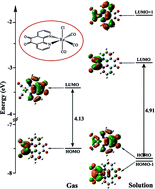
RSC Adv., 2015,5, 41125-41134
https://doi.org/10.1039/C5RA02002F
Efficient and tunable multi-color and white light Ln-MOFs with high luminescence quantum yields
Multi-color luminescent Ln-MOFs were synthesized and a white light-emission with a quantum yield up to 32% was achieved.
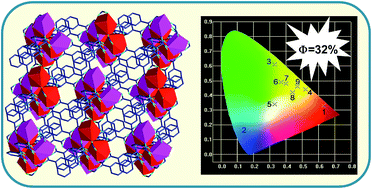
RSC Adv., 2015,5, 34936-34941
https://doi.org/10.1039/C5RA03710G
Photomagnetic molecular and extended network Langmuir–Blodgett films based on cyanide bridged molybdenum–copper complexes
The present manuscript describes two types of cyanide bridged molybdenum–copper photomagnetic films obtained by the Langmuir–Blodgett technique.
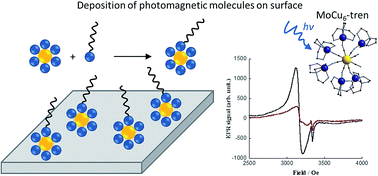
RSC Adv., 2015,5, 16696-16701
https://doi.org/10.1039/C4RA16915H
Remarkable visible light-triggered cytotoxicity of mitochondria targeting mixed-ligand cobalt(III) complexes of curcumin and phenanthroline bases binding to human serum albumin
Co(III) complexes of curcumin and phenanthroline bases show remarkable visible-light induced cytotoxicity in HeLa cells but are much less toxic in dark and to normal cells. The complexes bind to HSA with significant affinity.
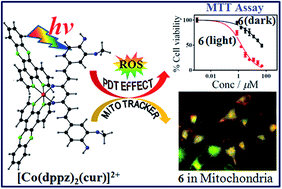
RSC Adv., 2015,5, 16641-16653
https://doi.org/10.1039/C4RA17314G
Fluorene-based novel gold(I) complexes with aggregation-induced emission (AIE) or aggregate fluorescence change characteristics: from green to white emission
Five novel fluorene-based gold(I) complexes were synthesized, these luminogens exhibited AIE or aggregate fluorescence change properties.

RSC Adv., 2015,5, 15341-15349
https://doi.org/10.1039/C4RA14972F
Multiple target chemosensor: a fluorescent sensor for Zn(II) and Al(III) and a chromogenic sensor for Fe(II) and Fe(III)
A multifunctional fluorescent and colorimetric chemosensor for Zn2+, Al3+, Fe2+ and Fe3+ was designed and synthesized.

RSC Adv., 2015,5, 11229-11239
https://doi.org/10.1039/C4RA13291B
A family of 3D lanthanide organic frameworks with tunable luminescence and slow magnetic relaxation
A family of 3D lanthanide organic frameworks with H2PIP has been synthesized and structurally characterized. The tunable luminescence and slow magnetic relaxation behaviour are investigated.
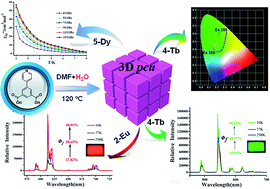
RSC Adv., 2015,5, 9898-9903
https://doi.org/10.1039/C4RA14939D
A dual-functional Cd(II)–organic-framework demonstrating selective sensing of Zn2+ and Fe3+ ions exclusively and size-selective catalysis towards cyanosilylation
A dual-functional metal–organic-framework can selectively sense Zn2+ and Fe3+ ions over mixed metal ions and displays size-selective catalysis towards cyanosilylation of aldehydes.
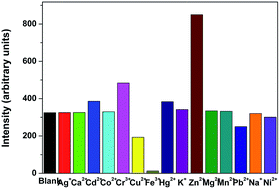
RSC Adv., 2015,5, 10119-10124
https://doi.org/10.1039/C4RA11678J
Perovskite solar cell with low cost Cu-phthalocyanine as hole transporting material
Low cost copper phthalocyanine has been used as hole-transporting material for the construction of organolead halide solid state perovskite solar cells.
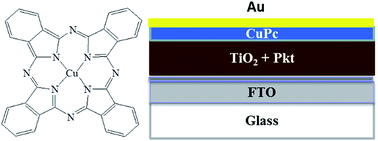
RSC Adv., 2015,5, 3786-3791
https://doi.org/10.1039/C4RA14321C
Roles of hydrogen bonds and π–π stacking in the optical detection of nitro-explosives with a luminescent metal–organic framework as the sensor
The nitro explosive detecting mechanism of a luminescent MOF sensor is revealed from the viewpoint of analyte–sensor interactions.
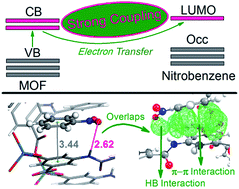
RSC Adv., 2015,5, 3045-3053
https://doi.org/10.1039/C4RA12835D
Easily prepared ruthenium-complex nanomicelle probes for two-photon quantitative imaging of oxygen in aqueous media
Easily prepared, biocompatible, and oxygen-sensitive optical probes with a large two-photon cross-section: towards inexpensive quantitative oxygen imaging in vivo.
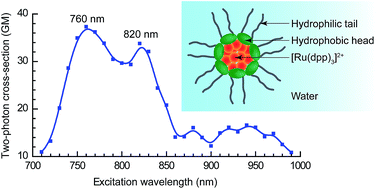
RSC Adv., 2015,5, 291-300
https://doi.org/10.1039/C4RA11229F
A mononuclear copper electrocatalyst for both water reduction and oxidation
The oxidation and reduction of water is a key challenge in the production of chemical fuels from electricity.
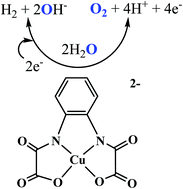
RSC Adv., 2014,4, 53674-53680
https://doi.org/10.1039/C4RA07211A
Two-photon phosphorescence lifetime imaging of cells and tissues using a long-lived cyclometallated Npyridyl^Cphenyl^Npyridyl Pt(II) complex
The ‘longer’ picture: emission bio-imaging over microsecond time frame with scanning, multi-photon posphorescence-lifetime-imaging-microscopy (PLIM).

RSC Adv., 2014,4, 35003-35008
https://doi.org/10.1039/C4RA04489D
Bio-imaging with neutral luminescent Pt(II) complexes showing metal⋯metal interactions
Self-assembled platinum compounds resulting in stable, highly emissive and long-lived species are reported for cell imaging.
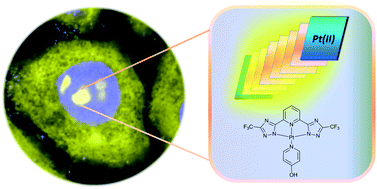
RSC Adv., 2014,4, 25709-25718
https://doi.org/10.1039/C4RA02351J
A water soluble FRET-based ratiometric chemosensor for Hg(II) and S2− applicable in living cell staining
A new water soluble rhodamine-based ratiometric dual ‘off–on–off’ probe can selectively detect Hg2+ ions in ppb level through time dependent FRET process with reversibility in presence of S2− anions.
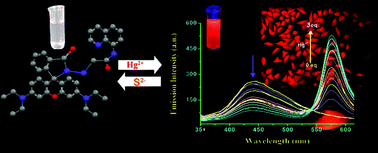
RSC Adv., 2014,4, 14919-14927
https://doi.org/10.1039/C3RA47800A
Syntheses, structures, and luminescence properties of anion-controlled heterometal modular coordination polymers based on a metalloligand
Three new heterometallic coordination polymers (CPs) have been obtained following a synthetic strategy of introducing AgX (X = NO3−, ClO4−, CF3SO3−) to react with a metalloligand [Ni(acac)2(EtOH)2]n (1). The ions in compounds 2–4 are crucial factors for the formation of the different structures.
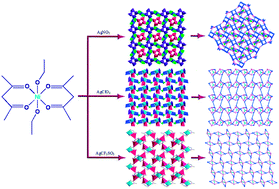
RSC Adv., 2014,4, 11384-11392
https://doi.org/10.1039/C3RA47303A
Emissive europium complexes that stain the cell walls of healthy plant cells, pollen tubes and roots
Five europium complexes have been assessed for their ability to stain live plant cells, roots and pollen tubes using time resolved imaging and spectroscopy.
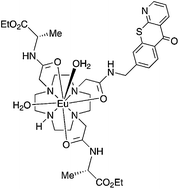
RSC Adv., 2014,4, 9356-9366
https://doi.org/10.1039/C3RA45426F
Novel triphenylamine-modified ruthenium(II) terpyridine complexes for nickel oxide-based cathodic dye-sensitized solar cells
A pair of new ruthenium based donor-π-chromophore sensitizers (K1 and K2) have demonstrated greatly improved performance in NiO based p-type dye sensitized solar cells (p-DSCs) compared to devices incorporating ‘traditional’ ruthenium sensitizers.
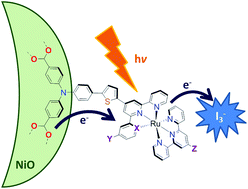
RSC Adv., 2014,4, 5782-5791
https://doi.org/10.1039/C3RA44690E
Facile fabrication of the visible-light-driven Bi2WO6/BiOBr composite with enhanced photocatalytic activity
Novel visible-light-driven Bi2WO6/BiOBr composite photocatalysts have been successfully synthesized by a facile one-pot solvothermal method in the presence of reactable ionic liquid [C16mim]Br.
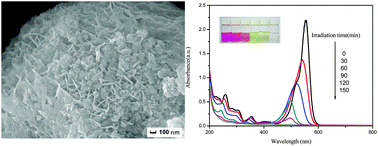
RSC Adv., 2014,4, 82-90
https://doi.org/10.1039/C3RA44191A
About this collection
The first ‘Editor’s collection’ that I did a few years ago focused on the general theme of supramolecular chemistry. In this new collection I have selected fifty papers in the general area of my other main interest, which is the luminescence and photophysical properties of metal complexes and metal complex assemblies, particularly in the d-block and f-blocks. Examples are principally molecular species but there are also papers involving metal-organic frameworks.
The massive scale and broad scope of RSC Advances provides a huge pool of excellent material on which to draw so the selection is necessarily highly subjective and cannot possibly include all worthy candidates: it is simply a set of papers that I find interesting, with some effort to cover the main recent developments in the field. Thus there are examples of papers covering subjects such as photocatalysis, dye-sensitised solar cells, cell imaging, photomagnetism, OLEDs and sensors – as well as many papers reporting fundamental, high-quality new science that has some relevance to photophysical properties of metal complexes of all types.
I hope you find it as interesting to browse these articles as I did to assemble the collection.
Mike Ward, Editor-in-Chief University of Sheffield